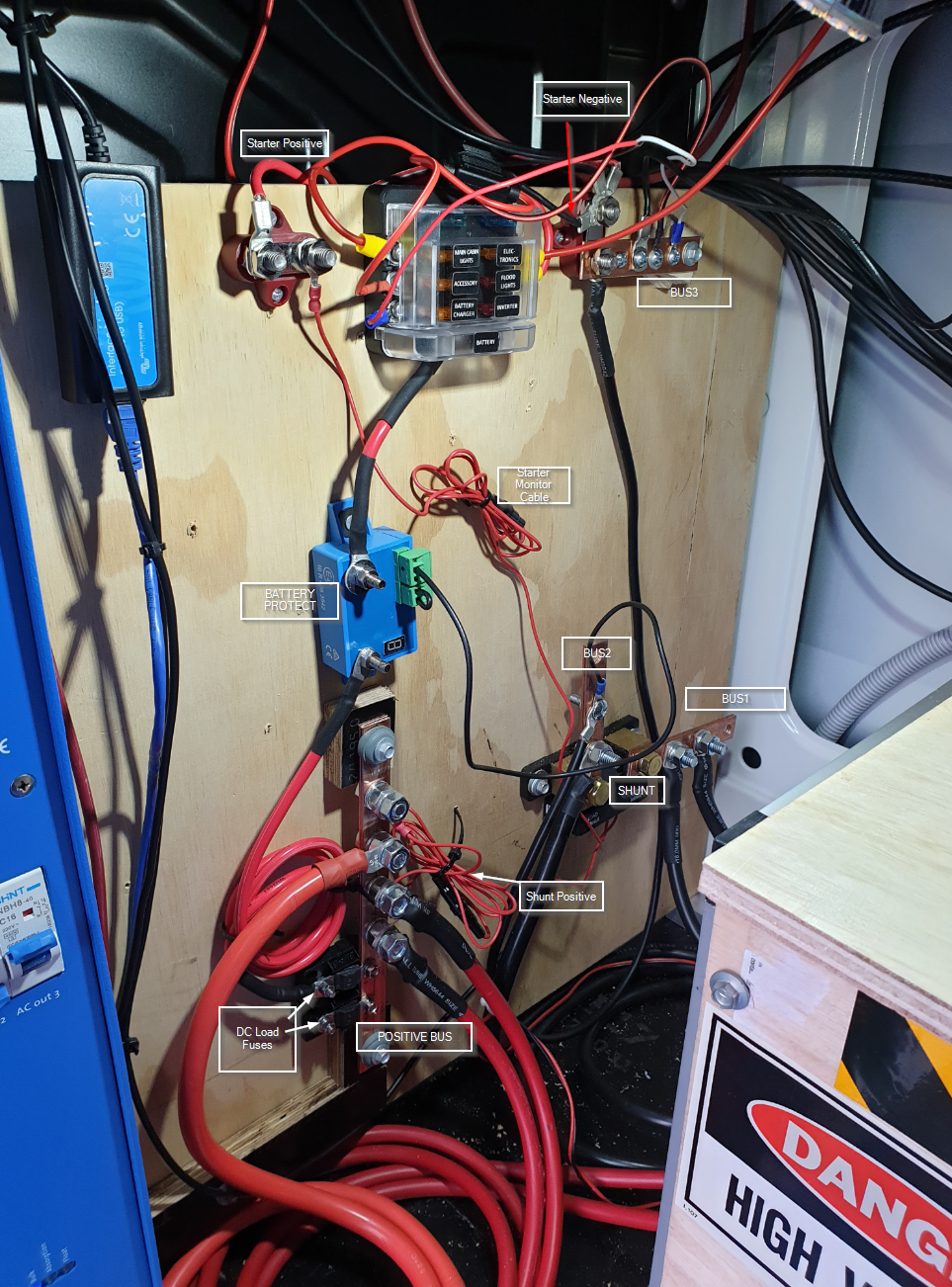Please bear with me. I'm brand new to this forum and a novice at electrical circuitry. Two days ago I installed a SmartShunt 500A on my Sprinter platform RV. The install was pretty straight forward and only required the additional purchase of an 18" 1/0 negative cable. Since the install I've determined that I would like to monitor the starter battery via the Aux input. The wiring schematic in the manual illustrates the negative connection leading from the starter battery in the same bold black line that the current monitoring house batteries are illustrated with. My starter battery is located 6 feet away from my house battery bank and would probably require a cable of 8 or 9 feet to properly route the cable. Since this leg is only monitoring voltage and not current, could this leg be wired with something like 18ga rather than 1/0 or some similar gauge? Also, again since the new leg is only monitoring voltage, would this negative leg need to initiate from the battery post or could it be wired to the location where it terminates at the chassis ground? It all seems rather redundant as both circuits terminate at the same chassis ground point. One more thing, does the positive wire actually need to attach to the battery or could I just tap in to any positive feed on that circuit? It seems as though voltage would be consistent on any of the legs fed by that battery. Any help here would be greatly appreciated.
John

